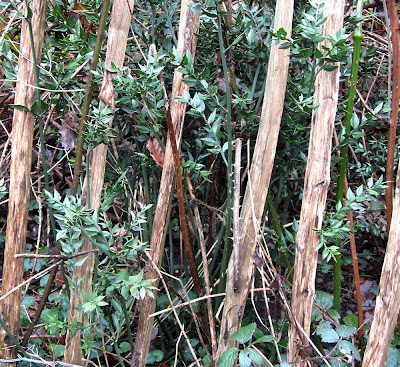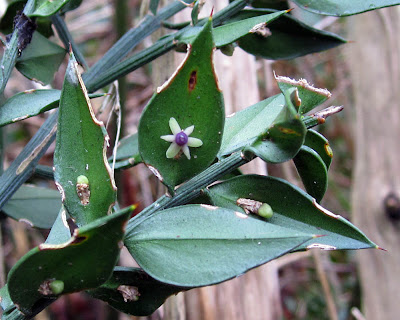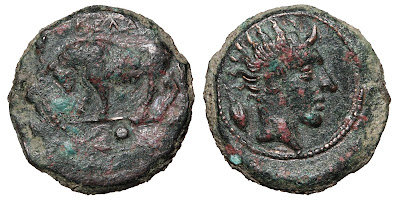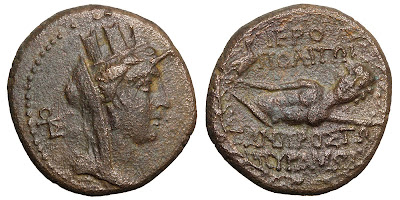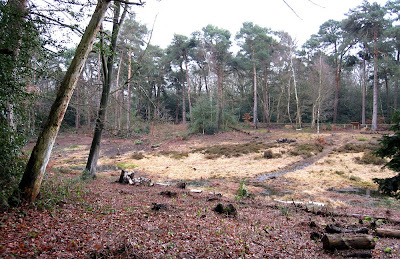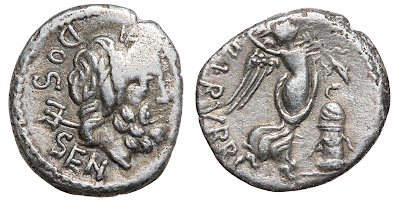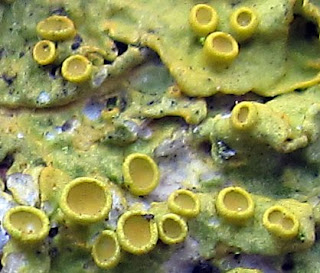 |
| Along the edge of Hayes Common towards Keston. |
We started at Hayes Station and walked through West Wickham Common, Keston Common, the Holwood estate, a few roads and paths, and High Elms, ending up in Farnborough Village. It was an overcast day with occasional drizzly rain, but not particularly windy, so not too cold - just.
I expected mud, but I was not prepared for just how slippery it was going to be. Sometimes, it was excessively so. As we walked down the hill from the Wilberforce Oak, down a path which must be just a water chute whan it is actually raining, we were slipping and sliding. Though Sarah, who was wearing green wellies, seemed to go through the muddy puddles by preference. You can see this happening in the first photo, which is on the edge of Hayes Common on the way to Keston. We thought this was muddy, but we hadn't yet seen Bogey Lane ...
 |
| Caesar's Well, Keston common. |
The second photo is of the so-called Caesar's Well, on Keston Common. There is also a Caesar's Camp nearby. One would think that this was one of Caesar's favourite haunts, though in fact he never came anywhere near Keston.
This "well" is a natural spring, the source of the river Ravensbourne. There is a story that Caesar saw a raven pecking at the ground here; he ordered his men to dig, and the spring appeared. How likely this is to be true, you will already have seen.
People used to bathe at this spring, which was then a much more private place. The road which runs just above it used to run nearer to Holwood House. But the road was diverted to give more privacy to Holwood, and less to the spring, after which public bathing soon ceased.
After this, the path runs through an old gravel pit, part of the Blackeath Gravel layer which is so prominent locally. It was gradually excavated by the public over many years, leaving this path in a hollow, with the road above to the left and heathland above to the right.
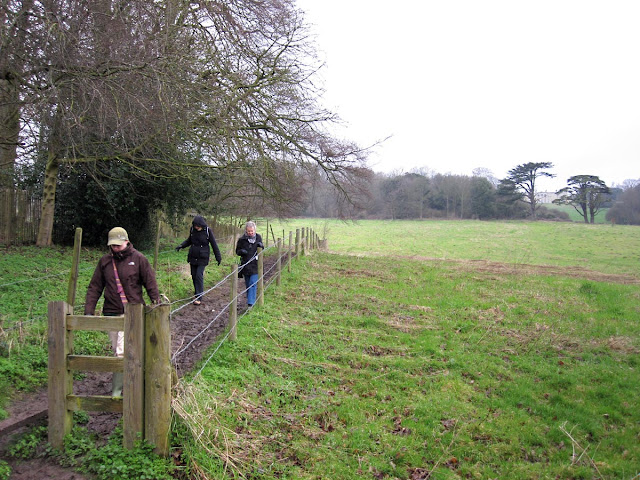 |
| Permissive footpath on the Holwood Estate. Holwood House in the background. |
The path through the main part of the Holwood estate is a right of way, but the section at the bottom of the hill is a permissive footpath, one where the public are allowed passage by the landowners but there is no right of way. There are a number of these in Bromley borough, and the landowners' generosity is much appreciated.
This one cuts past some tricky roads, narrow and with fast traffic. The photo above is of this footpath, with Holwood House just visible on the hillside in the background. Click on the photo to see it enlarged.
This is not the Holwood House that William Pitt the Younger lived in, but another which was built just next to the site of the original.
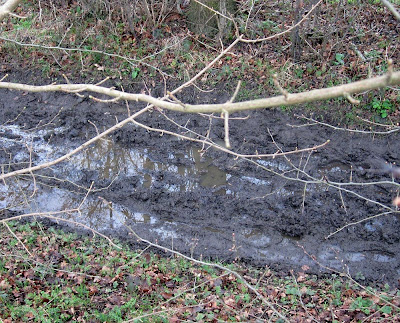 |
| The state of the footpath along Bogey Lane in February 2011. |
The photo on the left is of Bogey Lane, an ancient highway which is in theory a Byway Open to All Traffic, though access to vehicles is now restricted because of fly-tipping. Here is a Bromley press release about Bogey Lane fly-tipping.
In practice, after the recent rainy weather it was hardly passable even on foot. (Here I am considering, and rejecting, a pun about a BOAT.) Luckily we could parallel this section along the edge of a field. Elsewhere in the lane, tracks of horses and deer could be seen, but nothing with wheels has been there, at least not recently.
We had a short break at High Elms, at the wardens' base of operations in the old stable buildings, and then on for about half a mile to Farnborough village through the churchyard, where I briefly noticed interesting old gravestones, one mentioning a "Gypsy King", and a big old yew, as we zoomed past. From the village we were offered a lift back to Hayes station.
 |
| The Yew Walk at High Elms. Even this was pretty slippery. |
